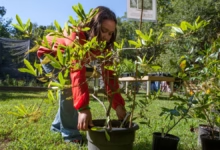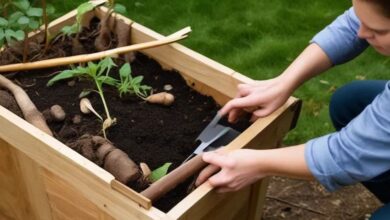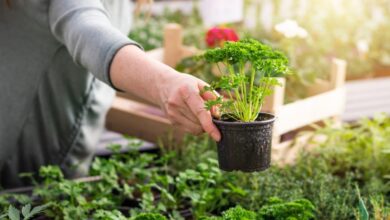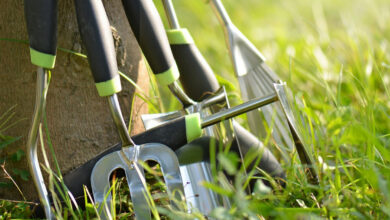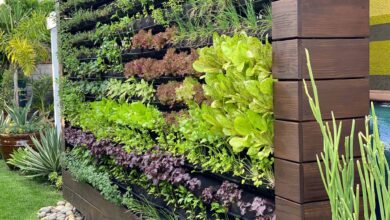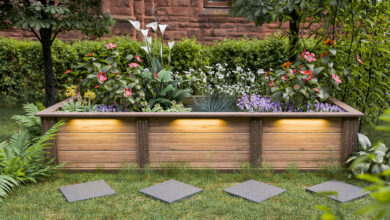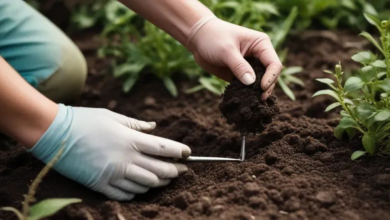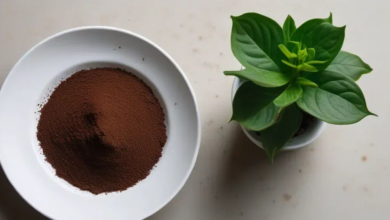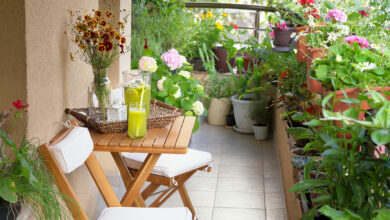The Best Soil Types for Healthy Garden Growth
The Best Soil Types for Healthy Garden Growth
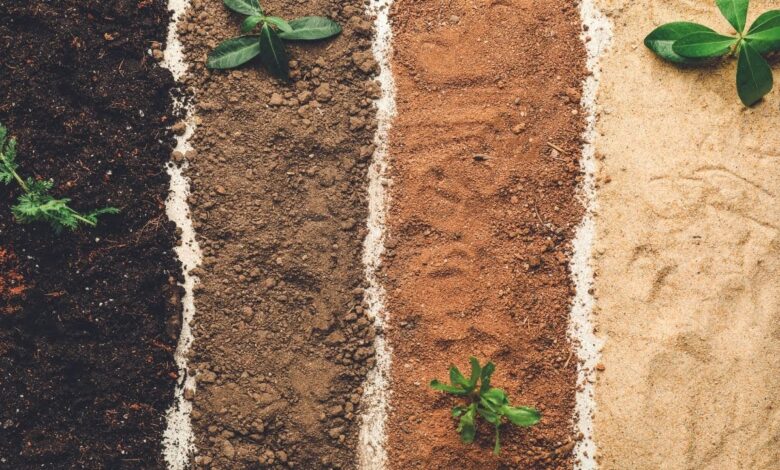
Creating a thriving garden begins with understanding the foundation beneath your plants’ roots – the soil. The best soil types for garden growth can dramatically impact plant health, yield, and overall garden success. Whether you’re a novice gardener or an experienced horticulturist, choosing the right garden soil is crucial for cultivating vibrant vegetables, blooming flowers, and robust plants.
Soil composition varies significantly across different regions and gardens, with each type offering unique benefits and challenges. The three primary soil types – clay, sandy, and loamy – each possess distinct characteristics that affect water retention, nutrient availability, and root development. Understanding these differences enables gardeners to make informed decisions about soil improvement, plant selection, and cultivation techniques.
Healthy garden growth depends on multiple soil factors, including pH levels, drainage capacity, organic matter content, and nutrient density. The ideal garden soil provides balanced moisture retention without becoming waterlogged, offers excellent aeration for root systems, and contains essential nutrients that support plant development throughout growing seasons.
Modern gardening success requires knowledge of how different soil types interact with various plants. From vegetables that thrive in well-draining sandy soils to perennials that flourish in nutrient-rich clay, matching plants to appropriate soil conditions maximizes growth potential. Additionally, understanding soil texture, mineral composition, and organic content helps gardeners create optimal growing environments through targeted amendments and improvements.
This comprehensive guide explores the characteristics, advantages, and challenges of major soil types, providing practical insights for achieving healthy garden growth. We’ll examine how to identify your existing soil, improve its quality, and select plants that will thrive in your specific growing conditions for long-term gardening success.
Understanding Soil Fundamentals
What Makes Soil Ideal for Plant Growth
Soil composition consists of four primary components that determine its quality and suitability for garden growth. The mineral particles – sand, silt, and clay – form the structural foundation, while organic matter provides nutrients and improves soil texture. Air spaces within the soil allow root respiration and water movement, while moisture content affects nutrient availability and plant hydration.
The best garden soil maintains a delicate balance between these elements. Optimal soil structure creates pore spaces that hold both air and water, allowing roots to access oxygen while maintaining adequate moisture levels. Soil pH significantly influences nutrient availability, with most plants thriving in slightly acidic to neutral conditions between 6.0 and 7.0.
Nutrient content in healthy garden soil includes essential macronutrients like nitrogen, phosphorus, and potassium, alongside micronutrients such as iron, magnesium, and calcium. Organic matter decomposition releases these nutrients gradually, providing sustained nourishment for plant growth while improving soil structure and water retention capabilities.
Soil Testing and Analysis
Determining your soil type requires systematic testing to understand its physical and chemical properties. The mason jar test provides a simple method for assessing soil texture by mixing soil with water and observing particle settling patterns. This reveals the proportions of sand, silt, and clay in your garden soil.
Soil pH testing using digital meters or test strips indicates acidity levels that affect nutrient availability and plant health. Most vegetables prefer soil pH between 6.0 and 7.0, while acid-loving plants like blueberries thrive in more acidic conditions. Regular pH monitoring ensures optimal growing conditions for different plant varieties.
Professional soil analysis through agricultural extension services provides comprehensive information about nutrient levels, organic matter content, and specific recommendations for soil improvement. These detailed reports guide fertilization programs, amendment applications, and plant selection strategies for maximum garden growth success.
Clay Soil: Benefits and Challenges
Characteristics of Clay Soil
Clay soil consists of extremely fine particles that create a dense, compact soil structure with excellent nutrient retention capabilities. This soil type typically appears dark and feels sticky when moist, forming tight clumps that hold their shape when squeezed. Clay garden soil often contains high levels of minerals and nutrients, making it naturally fertile for plant growth.
The dense particle structure of clay soil provides exceptional water and nutrient retention, preventing leaching of essential elements. However, this same density can create drainage challenges and restrict root penetration in compacted areas. Clay soil types tend to warm slowly in spring but maintain consistent moisture levels during dry periods.
Heavy clay soil presents unique cultivation challenges, including poor drainage, slow water infiltration, and difficulty in cultivation when wet or dry. The fine particle size creates limited air spaces, potentially restricting root respiration and leading to waterlogged conditions during wet seasons.
Advantages of Clay Soil for Gardens
Clay soil offers significant advantages for certain plants and growing conditions. Its superior nutrient retention capacity means fertilizers and organic amendments remain available to plants for extended periods, reducing the need for frequent applications. This soil type naturally contains essential minerals like potassium, calcium, and magnesium.
Plants with extensive root systems often thrive in clay soil once established, as the stable structure provides excellent anchorage for large trees and shrubs. Many perennial flowers, including roses, peonies, and daylilies, perform exceptionally well in clay garden soil due to consistent moisture availability and nutrient density.
The water retention properties of clay soil make it valuable in areas with irregular rainfall or during drought conditions. Gardens with clay soil types typically require less frequent watering than sandy soils, making them more sustainable and water-efficient growing environments.
Improving Clay Soil
Clay soil improvement focuses on enhancing drainage, aeration, and workability while maintaining its natural fertility. Adding coarse organic matter such as compost, aged manure, or leaf mold helps create larger pore spaces and improves soil structure. These amendments should be incorporated gradually over multiple seasons.
Coarse sand or perlite can improve clay soil drainage, but fine sand may worsen compaction problems. The key to successful clay soil amendment involves adding materials that create permanent structural improvements rather than temporary fixes. Avoid working clay soil when it’s too wet or dry, as this can damage soil structure.
Cover crops and deep-rooted plants help break up compacted clay soil naturally through root action and organic matter addition. Plants like daikon radishes, alfalfa, and crimson clover penetrate dense clay layers while adding nitrogen and organic material when decomposed.
Sandy Soil: Characteristics and Management
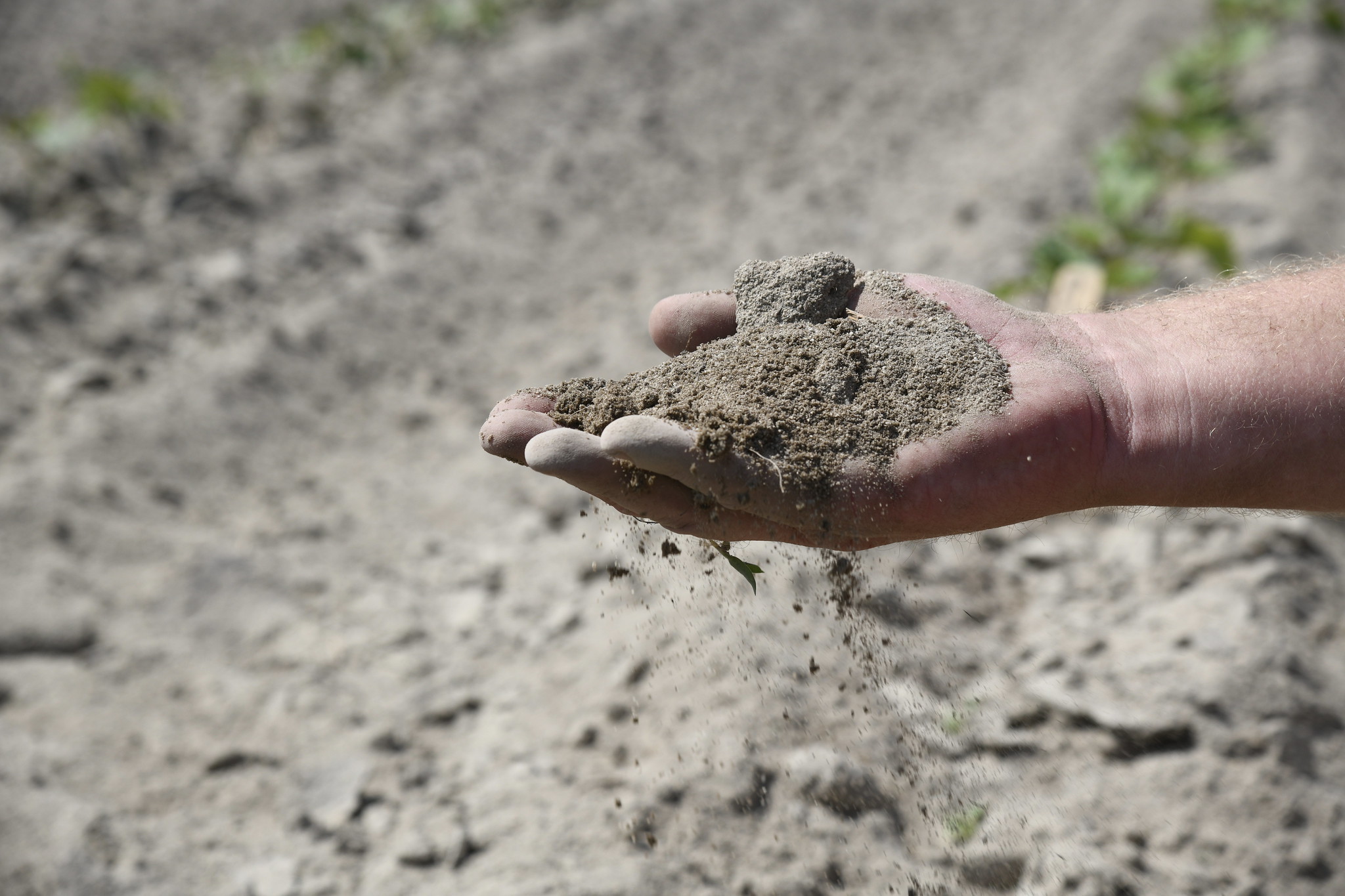
Understanding Sandy Soil Properties
Sandy soil consists primarily of larger mineral particles that create a well-draining, loose soil structure with excellent aeration properties. This soil type feels gritty between fingers and doesn’t hold its shape when squeezed, allowing water and nutrients to move freely through the profile. Sandy garden soil typically warms quickly in spring, enabling earlier planting seasons.
The large particle size in sandy soil creates numerous air spaces that promote root development and prevent waterlogging. However, this same characteristic leads to rapid water drainage and nutrient leaching, requiring more frequent watering and fertilization programs for optimal plant growth.
Sandy soil types often exhibit lower natural fertility compared to clay or loamy soils due to reduced organic matter content and rapid nutrient movement. The pH of sandy soil can vary widely but tends toward acidity in areas with high rainfall and organic matter decomposition.
Benefits of Sandy Soil for Gardening
Sandy soil offers several advantages for specific plants and gardening approaches. Root crops like carrots, radishes, and potatoes grow exceptionally well in sandy garden soil because the loose structure allows easy root development and harvest. Herbs such as lavender, rosemary, and thyme thrive in the well-draining conditions that sandy soil provides.
The excellent drainage of sandy soil prevents root rot and fungal diseases that commonly affect plants in waterlogged conditions. This soil type enables gardeners to work the ground earlier in spring and throughout wet seasons, providing flexibility for planting and cultivation activities.
Sandy soil responds quickly to amendments and fertilizers, allowing rapid adjustments to pH levels and nutrient content. Gardeners can create customized growing environments by adding specific amendments to meet individual plant requirements in sandy soil types.
Enhancing Sandy Soil Fertility
Sandy soil improvement requires building organic matter content and improving water and nutrient retention capabilities. Regular additions of compost, aged manure, or other organic materials help bind sand particles together while increasing the soil’s ability to hold water and nutrients.
Mulching plays a crucial role in sandy soil management by reducing water evaporation, moderating soil temperature, and gradually adding organic matter as mulch materials decompose. Organic mulches like straw, wood chips, or shredded leaves provide continuous improvement to sandy garden soil.
Cover cropping with nitrogen-fixing legumes helps build soil fertility in sandy soil types while adding organic matter through root systems and above-ground biomass. Plants like crimson clover, winter rye, and buckwheat improve sandy soil structure and nutrient content over time.
Loamy Soil: The Garden Gold Standard
What Makes Loamy Soil Ideal
Loamy soil represents the perfect balance of sand, silt, and clay particles, creating optimal conditions for healthy garden growth. This soil type typically contains approximately 40% sand, 40% silt, and 20% clay, providing excellent drainage while maintaining adequate water and nutrient retention. Loamy garden soil crumbles easily in the hands while holding together when squeezed.
The balanced particle composition of loamy soil creates an ideal pore space distribution for both air and water movement. Roots can easily penetrate loam soil while accessing necessary oxygen and moisture for optimal plant development. This soil type naturally provides excellent growing conditions for most vegetables, flowers, and landscape plants.
Loamy soil types typically contain abundant organic matter that supports beneficial microbial activity and nutrient cycling. The biological activity in loam soil creates natural soil aggregation that improves structure and fertility over time without extensive amendments or modifications.
Advantages of Loamy Soil
Loamy soil offers superior growing conditions for the widest variety of plants, making it highly valued by gardeners and commercial growers. The balanced soil texture provides optimal water infiltration and retention, reducing both drought stress and waterlogging risks. Most vegetables achieve maximum yields in loamy garden soil conditions.
The natural fertility of loamy soil reduces the need for extensive fertilization programs while supporting robust plant growth. Loam soil maintains stable pH levels and provides steady nutrient release throughout growing seasons. This soil type supports beneficial soil organisms that enhance nutrient availability and disease resistance.
Loamy soil types offer excellent workability for cultivation, planting, and harvesting activities. The soil structure remains stable under normal gardening practices while being easy to dig and amend as needed for specific crops or improvements.
Maintaining Loamy Soil Quality
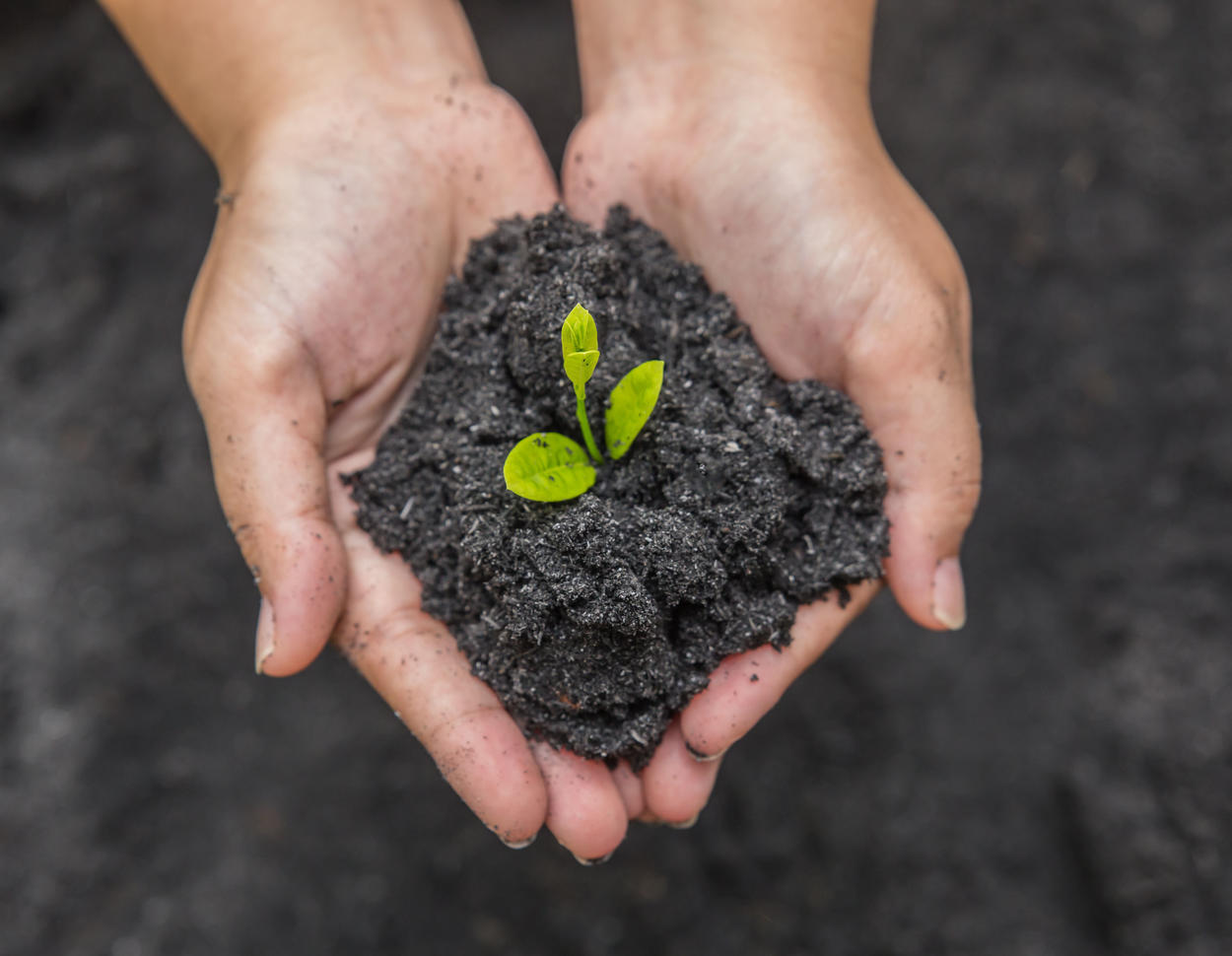
Preserving loamy soil quality requires ongoing attention to organic matter levels and soil structure protection. Regular compost additions help maintain the organic content that supports the beneficial properties of loam soil. Avoiding compaction through proper timing of cultivation activities preserves the ideal soil structure.
Loamy garden soil benefits from crop rotation and diverse plantings that maintain soil biological activity and prevent nutrient depletion. Cover cropping during fallow periods protects loamy soil from erosion while adding organic matter and maintaining soil structure.
Minimal tillage practices help preserve the natural aggregation and biological activity in loamy soil types. When cultivation is necessary, working the soil at appropriate moisture levels prevents damage to the delicate structure that makes loam soil so valuable for plant growth.
Specialized Soil Types
Silty Soil Characteristics
Silty soil contains predominantly medium-sized particles between sand and clay, creating unique growing conditions for garden plants. This soil type feels smooth and flour-like when dry, becoming slippery when wet. Silty garden soil offers good fertility and water retention while providing better drainage than clay soils.
The particle size of silty soil creates moderate porosity that balances air and water movement reasonably well. However, silty soil types can become compacted under heavy foot traffic or equipment use, reducing their effectiveness for plant growth. Proper management maintains the beneficial characteristics of silty soil.
Silty garden soil often occurs in areas with historical flooding or near water bodies where fine sediments have accumulated over time. This soil type typically contains good levels of nutrients due to the accumulation of organic materials in depositional environments.
Chalky and Alkaline Soils
Chalky soil contains high levels of calcium carbonate, creating alkaline conditions with pH levels often exceeding 7.5. This soil type presents unique challenges for garden growth due to nutrient availability issues in highly alkaline conditions. Chalky garden soil often appears light-colored and may contain visible chalk or limestone particles.
Plants requiring acidic conditions struggle in chalky soil types, while others thrive in the alkaline environment. Mediterranean herbs, lavender, and many ornamental plants adapted to limestone regions perform well in chalky soil. Understanding plant preferences helps gardeners work successfully with this soil type.
Managing chalky garden soil requires careful plant selection and strategic use of acidifying amendments like sulfur or organic matter. While challenging to modify, chalky soil can support beautiful gardens when planted with appropriate species that tolerate or prefer alkaline conditions.
Peaty Soil Considerations
Peaty soil develops in waterlogged conditions where organic matter accumulates faster than it decomposes, creating highly organic soil types with unique properties. This soil type typically appears dark brown or black and feels spongy when handled. Peaty garden soil offers excellent water retention and organic matter content.
The high organic content of peaty soil provides exceptional nutrient availability and supports vigorous plant growth when properly managed. However, peaty soil types can be acidic and may require lime applications to achieve optimal pH levels for most garden plants.
Peaty garden soil requires careful water management to prevent both drought stress and waterlogging. The organic nature of peaty soil makes it valuable for growing acid-loving plants while requiring amendments for plants preferring neutral conditions.
Soil Amendments and Improvements
Organic Matter Integration
Organic matter forms the foundation of soil improvement programs for all soil types, providing nutrients, improving structure, and supporting beneficial microbial activity. Compost represents the most versatile organic amendment, suitable for clay, sandy, and loamy soils. Organic matter integration should occur gradually over multiple seasons for the best results.
Different organic amendments serve specific purposes in soil improvement strategies. Aged manure provides nutrients while improving soil structure, while leaf mold primarily enhances soil texture and water retention. Organic matter selection depends on existing soil conditions and specific improvement goals.
Organic amendment application timing affects its effectiveness in different soil types. Fall applications allow winter decomposition and integration, while spring additions provide immediate nutrient availability for growing plants. Organic matter should be incorporated properly to maximize benefits and prevent nitrogen competition.
pH Adjustment Strategies
Soil pH modification requires understanding the buffering capacity of different soil types and selecting appropriate amendment materials. Acidic soils benefit from limestone applications, while alkaline soils require sulfur or organic acids for pH reduction. pH adjustment processes occur slowly and require patience for significant changes.
Soil testing guides pH modification programs by indicating current levels and buffering capacity. Clay soils typically require larger amounts of pH amendments than sandy soils due to higher buffering capacity. Regular monitoring ensures pH adjustment efforts achieve desired results without overcorrection.
Organic matter additions naturally moderate soil pH extremes while improving overall soil health. Compost and other organic amendments help stabilize pH levels and reduce the need for chemical pH adjustments in most garden situations.
Drainage and Aeration Enhancement
Soil drainage improvement varies significantly among soil types, requiring targeted approaches for each situation. Clay soil drainage enhancement typically involves organic matter addition and physical modifications like raised beds or drainage tiles. Sandy soils rarely require drainage improvements but may benefit from water retention enhancements.
Soil aeration problems occur primarily in compacted soils where pore spaces become restricted. Organic matter additions, reduced cultivation, and cover cropping help restore natural soil structure and improve aeration over time. Mechanical aeration provides immediate but temporary relief for severely compacted areas.
Soil structure improvements through organic amendments and proper management create lasting enhancements to both drainage and aeration. Soil organisms play crucial roles in maintaining healthy soil structure that supports optimal plant growth conditions.
Plant Selection by Soil Type
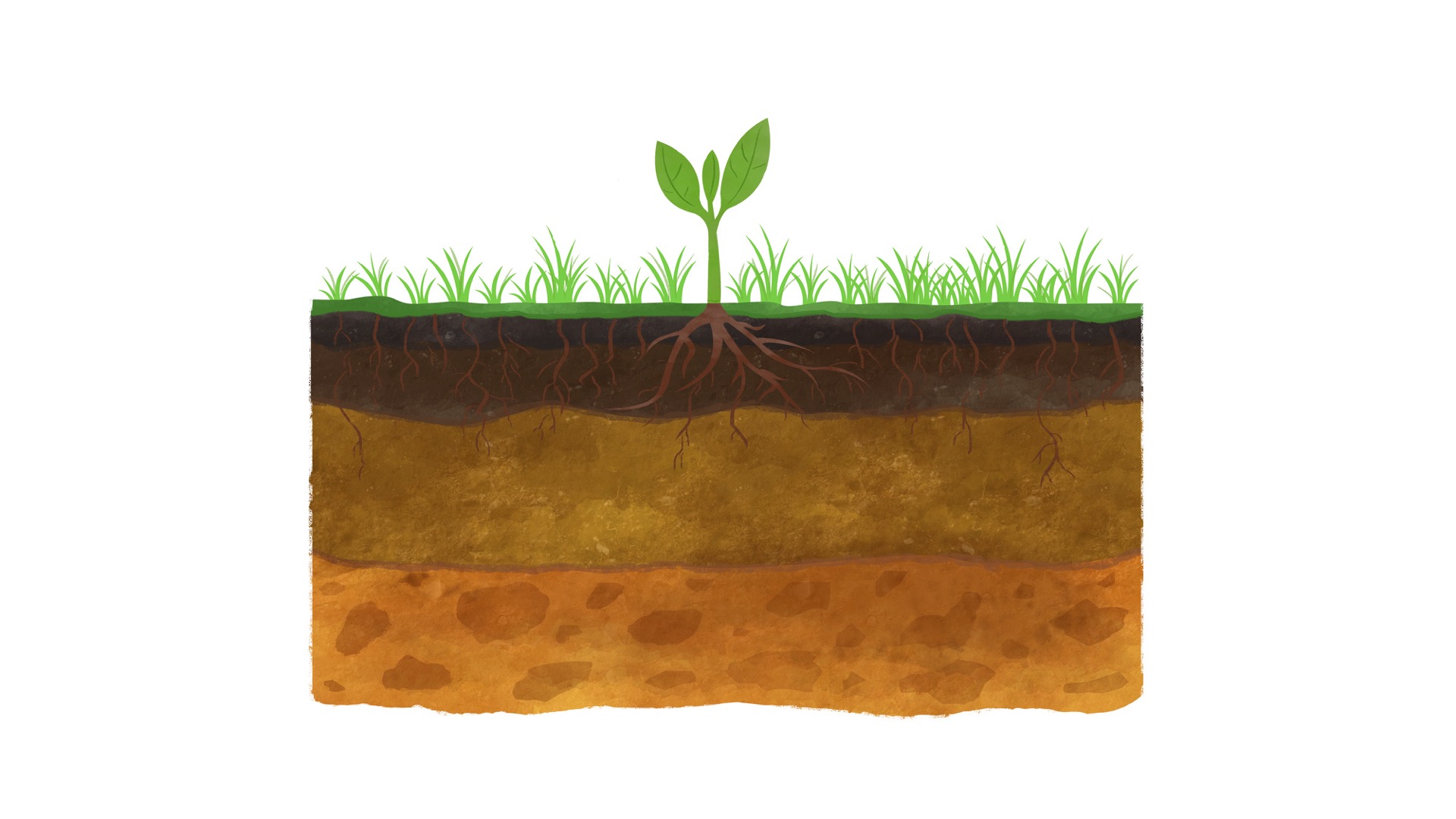
Vegetables for Different Soils
Vegetable garden success depends heavily on matching crops to appropriate soil types and conditions. Root vegetables like carrots, parsnips, and radishes thrive in sandy soils that allow easy root development and prevent deformation. Leafy greens and brassicas perform well in loamy soil with consistent moisture and nutrient availability.
Clay soil supports vegetables with substantial root systems and those requiring consistent moisture, including tomatoes, peppers, and squash. Soil amendments can modify growing conditions to accommodate vegetables not naturally suited to existing soil types. Soil preparation varies significantly among different vegetable crops and garden soil conditions.
Succession planting and crop rotation help maximize vegetable production while maintaining soil health across different soil types. Cover crops between growing seasons improve soil structure and fertility for subsequent vegetable plantings. Soil management practices should align with long-term garden productivity goals.
Flowers and Ornamentals
Flowering plants exhibit varied soil preferences, with some thriving in challenging soil conditions while others require specific soil types. Perennial flowers like coneflowers and black-eyed Susans adapt to various soil types, while roses prefer loamy soil with good drainage and fertility.
Native plants typically perform best in soil types similar to their natural habitat, requiring fewer amendments and less maintenance. Mediterranean plants excel in sandy or chalky soils with excellent drainage, while shade plants often prefer organic-rich soils with consistent moisture.
Soil preparation for ornamental plantings should consider mature plant sizes and long-term soil health. Perennial gardens benefit from thorough soil improvement before planting, while annual flower beds can be modified annually to accommodate different species.
Trees and Shrubs
Tree and shrub selection requires careful consideration of soil types and long-term growing conditions. Clay soils provide excellent support for large trees once established, while sandy soils may require more frequent watering and fertilization for woody plants. Soil depth and drainage affect root development and plant stability.
Native trees and shrubs typically adapt best to local soil conditions without extensive modifications. Fruit trees generally prefer loamy soils with good drainage and fertility, though specific varieties may tolerate different soil types. Soil testing guides appropriate species selection and amendment programs.
Planting techniques vary among soil types, with clay soils requiring careful attention to prevent root circling and sandy soils needing additional organic matter and mulching. Long-term soil management supports healthy tree and shrub development throughout their lifespan.
Seasonal Soil Management
Spring Soil Preparation
Spring soil preparation varies significantly among soil types and requires timing based on soil conditions rather than calendar dates. Clay soils need additional drying time before cultivation to prevent compaction damage. Sandy soils typically become workable earlier in spring, allowing extended planting seasons.
Soil temperature monitoring guides planting decisions across different soil types. Sandy soils warm faster than clay soils, enabling earlier planting of warm-season crops. Soil amendments applied in spring should complement existing soil conditions and specific crop requirements.
Spring fertility programs depend on soil testing results and planned plantings. Slow-release fertilizers work well in sandy soils, while clay soils may retain nutrients from fall applications. Organic matter additions in spring provide immediate benefits for growing plants.
Summer Soil Care
Summer soil management focuses on maintaining adequate moisture levels and preventing stress across different soil types. Sandy soils require frequent watering and mulching to maintain plant health, while clay soils may need drainage attention during heavy rainfall periods.
Mulching strategies vary among soil types, with organic mulches providing universal benefits for moisture retention and soil improvement. Summer cultivation should be minimized to preserve soil structure and avoid compaction during dry periods. Soil organisms remain active during summer with proper moisture management.
Soil temperature moderation through mulching and irrigation helps maintain optimal growing conditions. Clay soils benefit from consistent moisture levels to prevent cracking, while sandy soils require protection from excessive heat and drying.
Fall and Winter Soil Protection
Fall soil management prepares gardens for winter while improving conditions for the following season. Cover crop establishment protects soil structure and adds organic matter across all soil types. Compost applications in fall allow winter decomposition and spring nutrient availability.
Winter soil protection varies among soil types and climate conditions. Clay soils benefit from avoiding foot traffic during freeze-thaw cycles, while sandy soils may need windbreak protection from erosion. Mulch layers protect soil organisms and moderate temperature extremes.
Soil planning for the following season should consider crop rotation, amendment needs, and structural improvements. Winter months provide opportunities for soil testing and amendment acquisition for spring implementation programs.
Common Soil Problems and Solutions
Compaction Issues
Soil compaction reduces pore space and restricts air and water movement, creating challenging growing conditions across all soil types. Clay soils are particularly susceptible to compaction damage, while sandy soils generally resist compaction problems. Heavy foot traffic and equipment use during wet conditions cause most compaction issues.
Compaction prevention through proper timing of garden activities and pathway establishment protects soil structure. Organic matter additions and reduced tillage help maintain natural soil aggregation that resists compaction. Cover crops with deep root systems help break up existing compacted layers naturally.
Compaction repair requires patience and appropriate techniques for different soil types. Mechanical aeration provides immediate relief but doesn’t address underlying causes. Biological soil improvement through organic matter and soil organisms creates lasting solutions to compaction problems.
Drainage Problems
Poor drainage affects plant health by restricting root respiration and creating conditions favorable for root rot diseases. Clay soils commonly experience drainage problems due to small pore sizes and slow water movement. Soil amendments and physical modifications address most drainage issues effectively.
Drainage solutions vary significantly among soil types and site conditions. Raised beds provide immediate drainage improvement for clay soils, while organic matter additions create long-term structural improvements. French drains or other engineered solutions may be necessary for severe drainage problems.
Plant selection for poorly drained soils includes species adapted to wet conditions rather than attempting extensive soil modifications. Bog gardens and rain gardens utilize naturally wet areas productively while managing drainage issues constructively.
Fertility Management
Soil fertility management requires understanding nutrient cycling and availability in different soil types. Sandy soils require frequent fertilization due to rapid nutrient leaching, while clay soils retain nutrients longer but may have availability issues. Soil testing guides appropriate fertility programs for specific conditions.
Organic fertility programs build long-term soil health while providing plant nutrition. Compost, organic fertilizers, and cover crops support beneficial soil organisms that enhance nutrient availability naturally. Chemical fertilizers provide immediate nutrition but require careful application to avoid environmental issues.
Nutrient balance across different soil types requires understanding plant needs and soil capabilities. Soil amendments should address specific deficiencies identified through soil testing rather than general fertilization approaches. Soil pH significantly affects nutrient availability and should be optimized for planned plantings.
Sustainable Soil Practices
Building Long-term Soil Health
Sustainable soil management focuses on building soil health through practices that enhance biological activity and natural processes. Soil organisms play crucial roles in nutrient cycling, soil structure development, and plant health across all soil types. Organic matter additions support diverse soil ecosystems that improve garden productivity naturally.
Soil biodiversity enhancement through diverse plantings and reduced chemical inputs creates resilient garden ecosystems. Cover crops, companion planting, and crop rotation support beneficial soil organisms while improving soil structure and fertility. Sustainable practices work with natural processes rather than against them.
Long-term soil building requires patience and consistent application of beneficial practices. Soil improvement occurs gradually through accumulated organic matter, enhanced soil structure, and increased biological activity. Sustainable gardens become more productive and require fewer inputs over time.
Water Conservation Strategies
Water-efficient gardening adapts practices to soil types and local climate conditions. Mulching provides universal water conservation benefits while improving soil health across all soil types. Drip irrigation and soaker hoses deliver water efficiently to plant root zones with minimal waste.
Soil water retention can be improved through organic matter additions and proper soil structure management. Clay soils naturally retain water but may require drainage improvements, while sandy soils benefit from organic amendments that increase water-holding capacity.
Drought-resistant gardening selects plants appropriate for soil types and available water resources. Native plants typically require less water once established and adapt better to local soil conditions. Water harvesting and storage systems provide irrigation during dry periods.
Integrated Pest Management
Soil health directly impacts plant disease resistance and pest problems across all soil types. Healthy soils support vigorous plant growth that naturally resists many pest and disease issues. Beneficial soil organisms compete with harmful pathogens and support plant immune systems.
Natural pest control through soil management includes encouraging beneficial insects and soil organisms that control pest populations. Crop rotation and diverse plantings disrupt pest life cycles while improving soil health. Chemical pesticides can harm beneficial soil organisms and should be used cautiously.
Disease prevention through soil management focuses on improving drainage, air circulation, and plant nutrition. Fungal diseases often result from poor drainage or compacted soils that stress plants. Soil amendments that improve soil structure help prevent many common plant health problems.
More Read: 7 Ways to Improve Garden Soil
Conclusion
Understanding and working with different soil typeformms the foundation of successful gardening and healthy garden growth. Clay soil, sandy soil, and loamy soil each offer unique advantages and challenges that require specific management approaches for optimal plant development.
Soil improvement through organic matter additions, proper pH management, and appropriate plant selection creates thriving garden ecosystems regardless of existing soil conditions. Sustainable soil practices build long-term soil health while supporting productive gardens that require fewer inputs over time.
Success in gardening ultimately depends on matching plants to appropriate soil types, implementing proper soil management techniques, and maintaining the biological processes that support healthy garden growth throughout all seasons.
